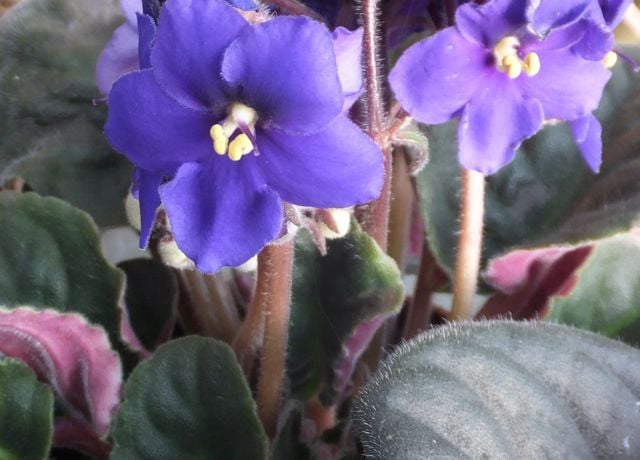
Okay of the many tender glasshouse plants Saintpaulias can be one of the trickiest. Yet almost everyone knew an aunt with a massive old African violet enduring on for years blooming almost perpetually. It will have been the original blueish violet flowered Saintpaulia ionantha, and it was probably set on a table in some north facing bay window in a little used and cool room.
To be fair these are not difficult but picky, however if you do get everything right then these are one of those few plants that can bloom almost year round in shades of blue through purple to red. Even without the blooms there’s always the good looking foliage.
But I’ll confess, I’ve probably lost more of these over the decades than almost any other plant! These are very prone to damp, to cold, to mealy-bug and vine weevils, all have taken a relentless toll. Fortunately replacements are inexpensive and easily had year round, and much better value than short lived bunches of flowers.
African violets, come from East and central Africa and were not introduced till the latter part of the Victorian era. They remained relatively unknown till relatively recent times when they became hugely popular as house-plants for their ability to resist dry air and live in cool lightly shady locations. Their leaves are quite thick and leathery and covered with fine hairs so are quickly attacked by mould if damp or just wetted.
Water with warm rain water, damp the compost never ever wet the plant. Never ever let the roots stand wet. Your Aunt knew that only too well.
Thus a rich, really free draining, compost is essential. They also like a cool dry place in the light, but never too bright –that’s why the north window, and a bay window so the plant was INSIDE the room when the curtains were closed. And why a little used room? So no dust spoilt those lovely leaves.
Saintpaulia ionantha is named after the German Baron Walter von Saint Paul-Illaire who discovered it. There are a dozen or more similar species from East Africa and at least six or seven dozen cultivars and hybrids for the collector.
And remember- take care when watering!!!


